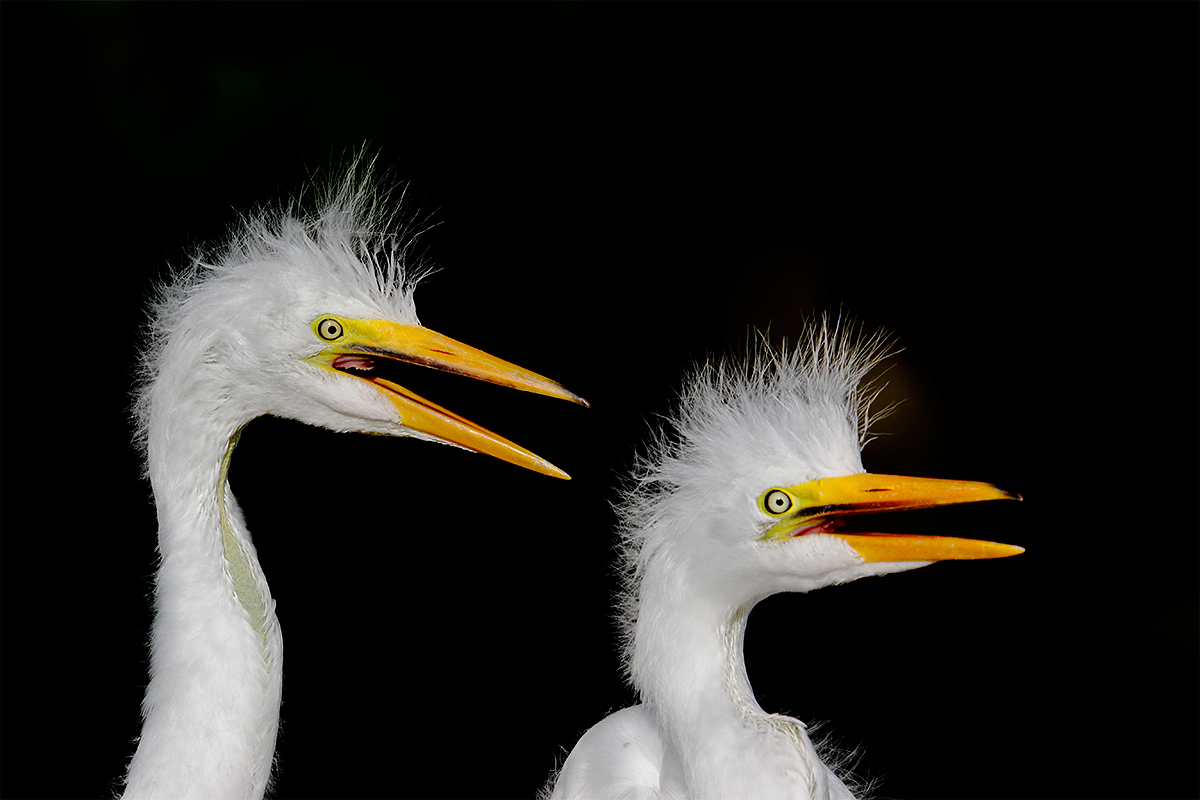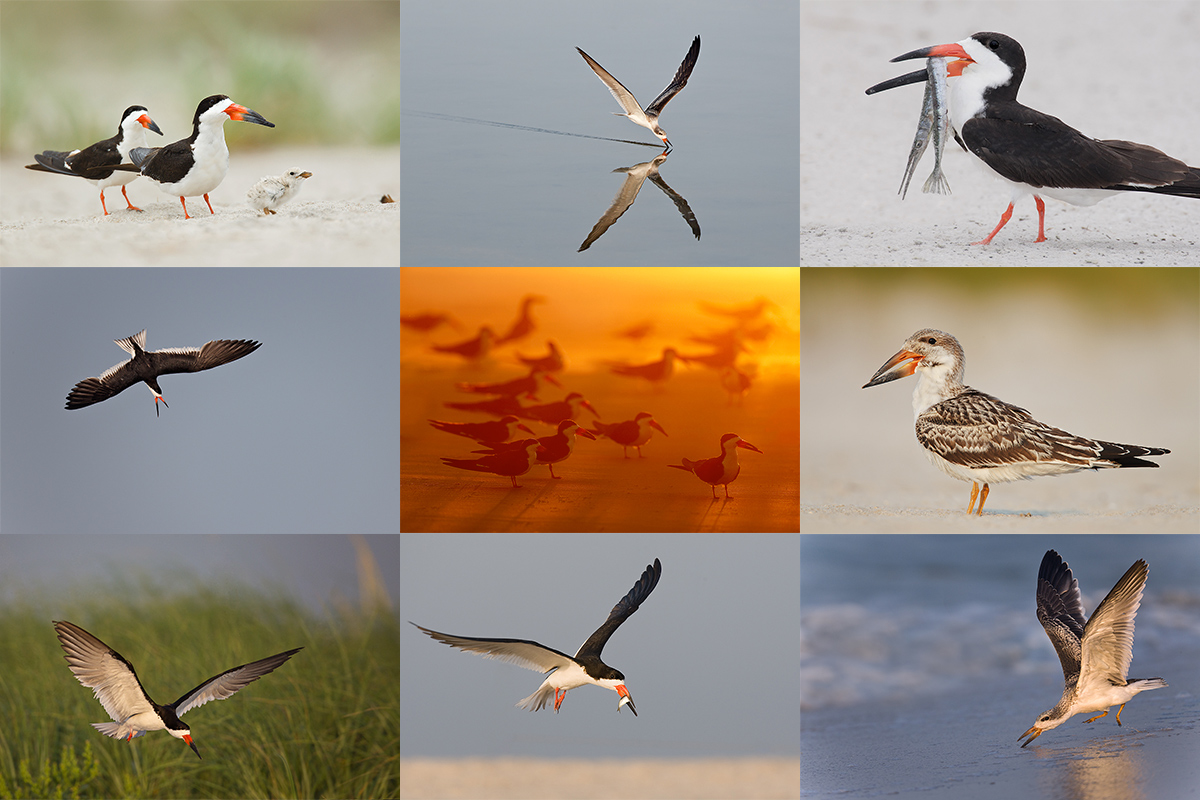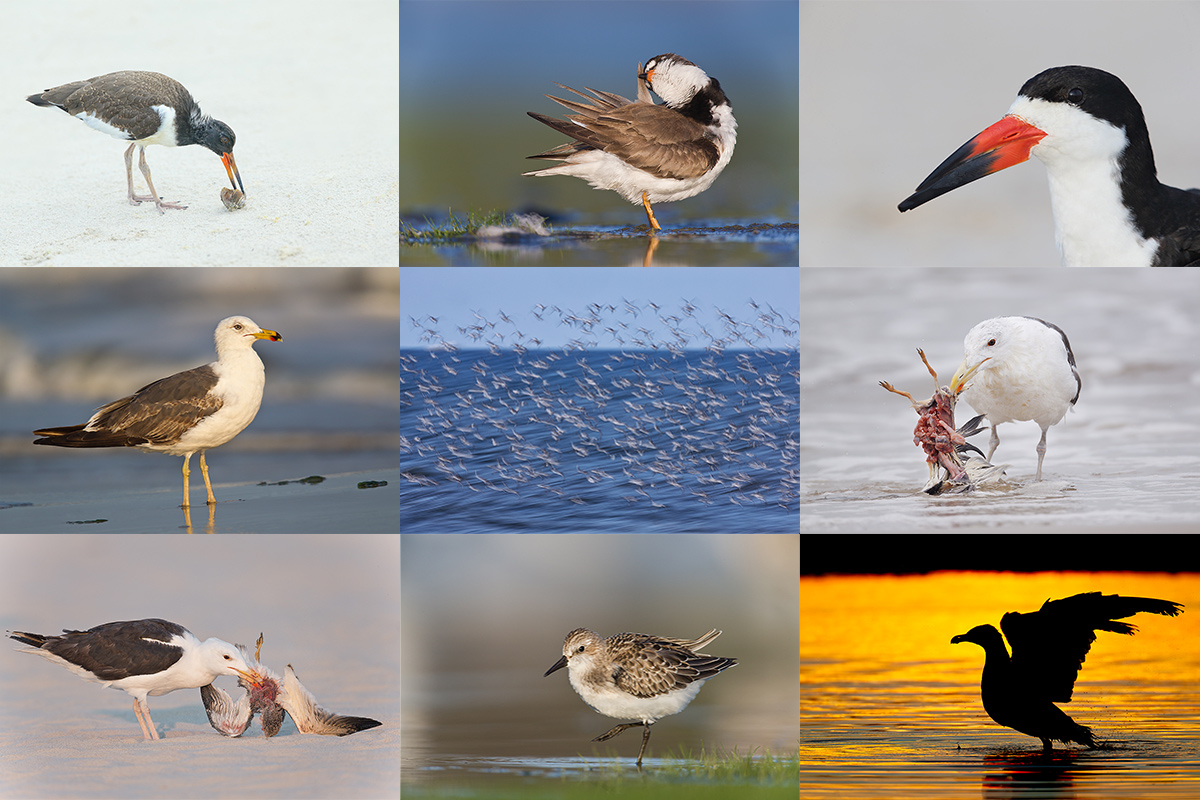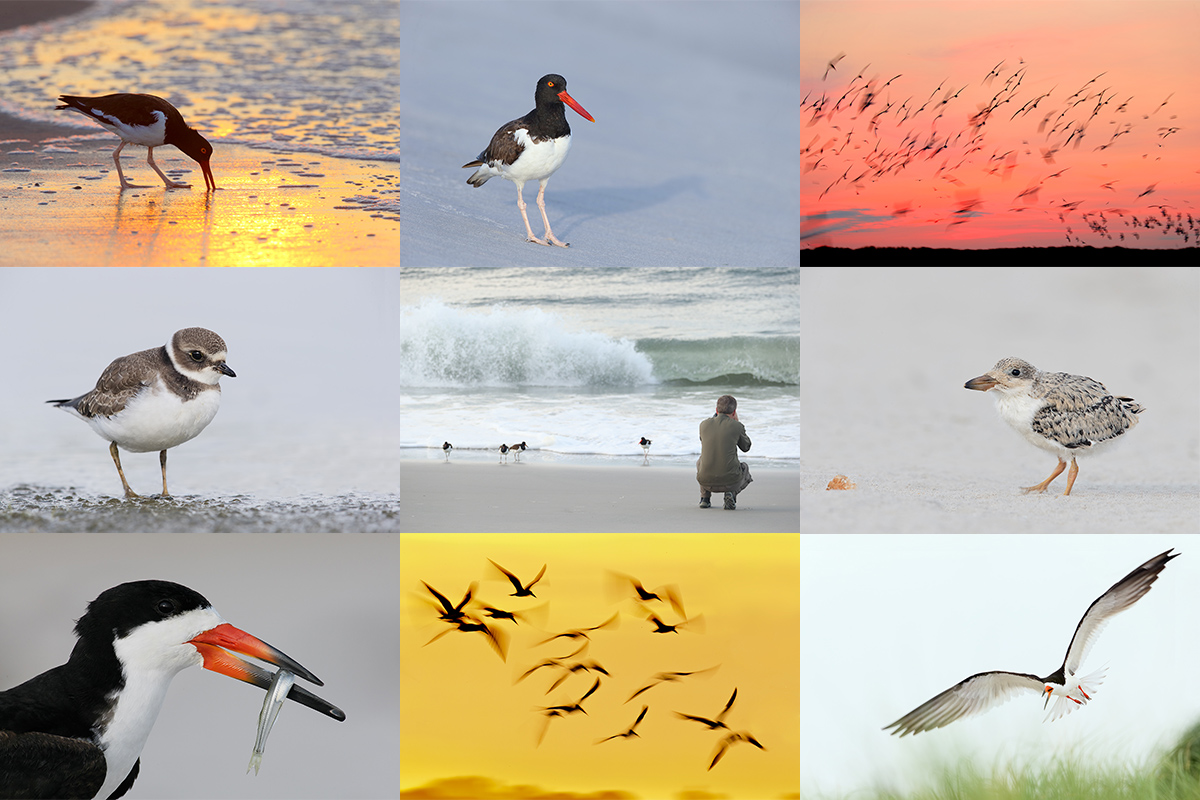Stuff
The second full day of the current IPT was a great one. The clouds and heavy overcast allowed us to photograph until 11:30am. everyone loved the lunch at my favorite local eatery, Gypsy Cab Company. Our afternoon session began with full sun but almost as soon as we arrived the cloud cover did the same. We spent lots of time working with flash. First-timer Jim Robbelard of Naples, FL was thrilled to learn to create high key flash-as-main-light images of Great Egrets that looked as if they were created in a studio.
This blog post, the 119th in a row, took about an hour to prepare. It is scheduled to be published automatically at 1am on Thursday morning. I head home after tomorrow morning’s session.


Canon’s Huge Megapixel Bodies
Many of you have read about the two new Canon 50+ megapixel bodies, the Canon EOS 5DS DSLR and the Canon EOS 5DS R DSLR. The two cameras look, sound, and pretty much are quite similar. I have withheld commenting until now because I did not have a good–heck, I did not have any–understanding of the single difference between the two bodies, that being the Low-Pass Filter Effect Cancellation.
If you missed the hugely popular “Canon’s Two New 50+ Megapixel Camera Bodies/You Must Read This Before You Buy,” you can click here to catch up and learn a ton to boot.
Please Remember to use our Affiliate Links 🙂
To show your appreciation for my continuing efforts here, we ask, as always, that you use our the B&H and Amazon affiliate links on the right side of the blog for all of your purchases. B&H is recommended for you major photography gear purchases, Amazon for your household, entertainment, and general purpose stuff. Please check the availability of all photographic accessories in the BIRDS AS ART Online Store, especially the Mongoose M3.6 tripod heads, Gitzo tripods, Wimberley heads and plates, LensCoats and accessories, and the like. We sell only what I have used, have tested, and can depend on. We will not sell you junk. We know what you need to make creating great images easy and fun. And we are always glad to answer your gear questions via e-mail. I just learned that my account was suspended during my absence; it should be up and running by Monday at the latest.
I would of course appreciate your using our B&H affiliate links for all of your major gear, video, and electronic purchases. For the photographic stuff mentioned in the paragraph above we, meaning BAA, would of course greatly appreciate your business. Here is a huge thank you to the many who have been using our links on a regular basis and visiting the BAA Online store as well.
|
This image was created on the current IPT with the Canon EF 600mm f/4L IS II USM lens, the Canon Extender EF 2X III, and the amazing Canon EOS 7D Mark II. ISO 400. Evaluative metering -2/3 stop: 1/1000 sec. at f/11. Center AF point (by necessity)/AI Servo Expand/Rear Focus AF as framed on the chick on the left, say a prayer, and re-compose. Click here to see the latest version of the Rear Focus Tutorial. Click on the image to see a larger version. Great Egret chicks in the nest begging |
Extreme Focal Length/High Contrast Great Egret Chicks
600 II X 2X III X 1.6 crop factor of the 7D II = 1920mm or approximately 38.2 X magnification…. Best advice even at relatively high shutter speeds: be sure to hold your rig still. Note that the exposure is the equivalent of the standard ISO 400 bright WHITEs in full sun exposure of 1/2000 sec. at f/8 (for folks who are using DPP 4 with Highlight Tone Priority set). If not the latter, try 1/2500 sec. at f/8. Remember that you are always responsible for checking the histogram to see that you have at least some data in the highlight (right-most) box of the histogram and in the same vein that you are always responsible for checking for blinkies.
Image Question
Do you think that flash was used in the creation of this image? If yes, flash as main light or flash as fill? Why? If not, can you describe a situation that might have resulted in the black background?
|
The strange thing is that when I lived in New York, I never knew about this amazing and consistently productive location. |
Nickerson Beach/JBWR (possibly…)/Black Skimmer/Oystercatcher/migrant shorebird IPT: August 13-16, 2015. 3 1/2 DAYS: $1399.
Meet and greet on the evening of WED August 12. Limit 10/Openings 5.
Most of our seven photo sessions will be spent at Nickerson beach photographing the nesting Black Skimmers. In flight, sometimes battling. Carrying fish. Chicks of varying sizes from a very few just-hatched to lots of fledglings. It is likely that we will get to see some Great Black-backed Gulls preying on the juvenile skimmers. They swallow them whole. There will be lots of gulls to photograph as well as some Common Terns. Locally breeding shorebird species include American Oystercatcher–pretty much guaranteed, Willet, which is likely, and Piping Plover, which is probable but we need to get lucky with those to get close….
Save a space by calling Jim or Jen at the office and arranging to leave your deposit of $499. I hope to see you there.
JBWR?
If local conditions are ideal we may visit Jamaica Bay Wildlife Refuge to photograph southbound migrant shorebirds on one or possibly two mornings. Even if we do not visit JBWR we should get some good chances with the migrant shorebirds at the beach, especially Sanderling and Semipalmated Plover. Red Knot and others are possible.
|
As you can see, the oystercatchers are quite tame at Nickerson. And we will get you up early and we will stay out late. |
Jamaica Bay Wildlife Refuge In-the-field Instructional Photo Workshop/Scouting Session. August 12, 2015. Morning only: $250. Cheap!
The tide will be pretty good at the East Pond…. If I learn that conditions there are un-photographable we will do Nickerson Beach as a back-up. This will work either as an add-on for out of town folks coming for the IPT above or as a stand alone session. Either way, you will, as always, learn a ton. And we might even get some good images.
Be sure to like and follow BAA on Facebook by clicking on the logo link upper right. Tanks a stack!
Support the BAA Blog. Support the BAA Bulletins: Shop B&H here!
We want and need to keep providing you with the latest free information, photography and Photoshop lessons, and all manner of related information. Show your appreciation by making your purchases immediately after clicking on any of our B&H or Amazon Affiliate links in this blog post. Remember, B&H ain’t just photography!
Amazon.com
Those who prefer to support BAA by shopping with Amazon may use this link:
Amazon Canada
Many kind folks from north of the border, eh, have e-mailed stating that they would love to help us out by using one of our affiliate links but that living in Canada and doing so presents numerous problems. Now, they can help us out by using our Amazon Canada affiliate link by starting their searches by clicking here. Many thanks to those who have written.
Typos
In all blog posts and Bulletins, feel free to e-mail or to leave a comment regarding any typos or errors. Just be right :).


















I’m saying flash was used because of the pin point eye highlight, and that even though they were in a shaded area -2/3 was needed to decrease the background ambient light to black.
Hi Peg, Nope :). The eye highlight was from the bright sun. The birds were in full sun. artie
ps: see the whole explanation here.
If the link works, here is the result I spoke of in my response, no flash, full sun, shaded background.
Please e-mail me the link and I will insert it. artie
Very nice picture, Artie.
If the subject (the birds) got full sunlight (as you explained)and the (very small background)is black, then the background in the image must have been in the shade (of a tree etc.)and your shadow did not point exactly at the birds.
So I guess, no flash was used.
Bernhard
Well done Bernhard. You are right on no flash. See the complete explanation here. I was in fact working right on sun angle; the boughs that provided the deep shade were directly above the nest blocking the sun on the relatively distant BKGR. artie
Flash as main light and I feel you had dark background which made this possible. Probably, in PP cleared background a bit too? This kind of effect can be possible with direct mid afternoon sun, but you would see harsh shadows. Thats not the case here since the light looks little flat on the birds and shadow is behind the birds.
Not to flash. No background clean-up needed. No harsh shadows because I was working right on sun angle 🙂 See Tuesday’s blog post for more on the latter. artie
I love the picture and I wish I had access to the glass used 🙂 I don’t believe a flash was used. I’ve gotten similar results taking a macro shot of a flower in open sun light with a semi-shaded flowerbed background. The end result was a perfectly exposed, shallow DOF flower and a black background.
Cheers,
Doug
ps: here is the link to the flower image:
Hi Doug, Bingo! Well done. artie
I’m guessing flash since you say your ITP group worked with a lot. I’ve found that -2/3 for ambient light prevents ghosting with moving subjects when using flash as the main light. And the 7D II will Hi Speed Sync up to 1/8000. But so far, I can’t figure out how a bright white exposure for the chicks equates with -2/3 exposure compensation. UNLESS…….. this is not flash and the Evaluative metering opened up beyond your normal bright white exposure by 2/3’s because of the shadowed background. Therefore you had to bring the too high exposure back down by 2/3 to equal your normal bright white exposure. I’ve had a few photos where the subject was in sun but the background so shadowed that it turned out black when the whites were properly exposed. So…after all this thinking out loud, I’m going to say you caught these chicks in the brief time the sun was out–without flash.
Your first line of reasoning was faulty; learn why here.
Yes to the bird in sun with deeply shaded BKGR. artie
I would say no flash. I have created images with a black background by placing the morning sun behind me and the subject in front of deep shade. The brighter the subject, the darker the background becomes.
Hi Dave, Bingo! Well done. artie
I would say “YES” you used flash as main light. This allowed a faster shutter speed and allows the background to be under exposed. I believe the -2/3 exposure setting would further darkens the background.
I don’t know how you would get a black background during the day without flash. (Not counting post production/photoshop magic…)
Hi Warren, Your answers sound great but flash as main light could not have been possible in this situation. Learn why here. artie
I’m going to say yes on flash, as main light. I’m also going to say the – 2/3 exposure compensation helped darken the background. And then I can also argue for the idea that in post-processing you adjusted the shadows and blacks to make sure the background was fully dark with no detail, and then masked the effect somewhat on the bill. My question is, how far back is the second bird? I notice f/11 rendered the side of face and top feathers of chick #2 sharp and the very tip of the bill slightly less so–which I think is terrific. At f/8 or f/11 I still struggle with getting a second bird/critter sharp with the first one (using Nikon 200-400mm). What I love best about the dark background is how you can use a smaller f/stop for DOF and not worry about distracting elements in foliage behind, especially with less bokeh at that setting, and thus achieve this stunning portrait. Or am I all wrong? 🙂
Hi Eve, Flash as main light not possible as noted here. artie
Artie great photos as usual. As for did you use flash yes. If I recall when the setting on the camera is less than 1/250 the ambient light is cancelled out. I just recently was learning some indoor lighting techniques using flash. I have used very little flash as I am into shooting outdoors and mostly birds.I am interested in all kinds of other photography disciplines. As I think it will help me understand lighting better which in return helps me with my wildlife photos. I read the blog everyday hoping to learn . Thanks for
all the great info and have a great day.
Hi Kevin, Thanks, but no flash 🙁 See the complete explanation here. artie
I do not pretend to know how you achieved this superb image, but thanks very much for posting it!
I have sometimes darkened backgrounds by using Viveza from the Nik Collection.
Best wishes.
Many thanks Stu. See the complete explanation here. artie
It certainly looks like flash as main light and you killed the ambient with the shutter speed. Or did you?
Without the posted shot details this looks pretty obvious.
But at 1/2000 shutter can the 7 d ll do this even with high speed sync?
Thinking about the focal length used, you have a very small portion of the land scape in your viewfinder.
Perhaps you managed to manoeouvre into a spot that gave you the dark background.
But how did you get such a nice exposure on the chicks?
Can I think of a situation where you might get this look without flash?
Turns out that I can. Improbable but possible….I think…
You got someone on the IPT to run down there with the black part of your 5 in 1 reflector and hold it behind the nest.
Then someone held the white reflector part to fill in the front light.
Voila! A studio shot but out in the open at 38.4 magnification.
And I wish I could have been there to see it.
Seriously , I have puzzled over this for a bit.
And I am very curious as to how it was done.
As always
Love
D
Hi David, You are all over the place :). You were on the right track by looking at high speed synch and the distance…. See the complete explanation here. artie
Hi Artie,
You’re right about me being all over the place.
After reading a few responses I pretty much figured it out. I have seen the explanation and understood.
Apology due for taking up space on the blog with frivolous comments.
As always
Love
D
Hey David,
No worries on the space. It is free.
later and love, artie
Was flash used in this image? I’ll say yes, only cause you mentioned
it in the opening paragraph.
Situations where a black background could still be the result? From
my experience, Venice Rookery. I have a shot of a baby Egret with a
black background. That was due to it being inside of the brush in its
nest. Cause of how deep it was inside, the background was black.
Doug